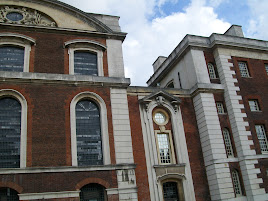Holmes criticises those who tell their tales back to front, but I intend to end this series, with looking at the first of the novels, ‘A Study in Scarlet’, originally published in Beetons Christmas Annual 1887. As with ‘The Valley of Fear’, this tale is in two books, with the second not featuring our heroes until a final wrap-up chapter. Therefore, it seems fit that I have also experienced twelve versions of STUD (the same as VALL).
Radio/Audio
This section contains a number of familiar names, with the most recent being the entries in the complete Sherlock Holmes projects of BBC Radio (starring Clive Merrison and Michael Williams) and Jim French Productions in the US (starring John Patrick Lowrie and Larry Albert). The former represented the first pairing of Merrison and Williams (following the Rees/Logan HOUND pilot), and interests me greatly because of this. I have also again enjoyed versions starring Carleton Hobbs and Norman Shelley (also BBC Radio) and Kevin McCarthy and Court Benson (CBS). However, my favourite radio version is again another BBC Radio version, in 1983 and starring Robert Powell (who would go on to play Holmes twice on stage, and Watson once on record) and Dinsdale Landen. In 88 minutes, both narratives get appropriate time, with a good focus on the first meeting – ‘Doctor Watson, Mr. Sherlock Holmes’. (The cassette case is at the top of this post)
Films
There is only one existing film of STUD (a 1914 version is lost), ‘A Study in Scarlet’ (1933)
starring Reginald Owen and Warburton Gamble. However, the film bears no relation in plot to the novel, as the
producers purchased rights only to the title, not the storyline of Conan Doyle's
book. Instead Holmes investigates the deaths of the members of a London secret
society. There is also the animated version produced by
Burbank Films in 1983, but my comments about their HOUND
apply here also.
Television
As with HOUND & SIGN, the earliest television STUD that I have seen is the 1968 BBC version, starring Peter Cushing and Nigel Stock. Remarkably of the five remaining stories from the 1968, three of them were their novel dramatisations (unfortunately VALL is missing). The Granada series also never adapted the duo’s first story. However, I also enjoyed the updated versions presented in ‘Sherlock: A Study in Pink’, both the transmitted version and the pilot version found on the DVD. (My perfect version would include parts from both). However, my favourite version is a Russian one from 1979, starring the excellent Vasily Livanov and Vitaly Solomin.
Theatre
I have seen just two theatrical versions of STUD. The most recent was a live stream online from Hardin County Schools Performing Arts Center (who I have also seen do the other three novels). This again interspersed the American backstory with the ongoing investigation very effectively, and featured an interesting talk from some real Mormons at the end.
The first, and my favourite was by Tacit Theatre Company at Southwark Playhouse in 2014, starring Philip Benjamin and Edward Cartwright. The play was staged in the venue’s smaller theatre, making the interspersed American scenes more immersive. They also made the most of the scene of our heroes meeting.
Conclusions
So after twelve dramatizations what have I learnt ? Intersperse the narratives. Trumpet the first meeting. Not all Mormons are criminals. Just because a film’s called ‘A Study in Scarlet’ doesn’t mean that’s what it is.
Favourites:
Radio/Audio: ‘A Study in Scarlet’ – BBC Radio 1983 (Powell/Landen)
Film: ‘A Study in Scarlet’ – Fox Film Corporation 1933 (Owen/Gamble)
TV: ‘Sherlock Holmes and Doctor Watson: Acquaintance/Bloody Inscription’ – Lenfilm Movie Studio 1979 (Livanov/Solomin)
Theatre: ‘A Study In Scarlet’ – Tacit Theatre Company 2014 (Benjamin/Cartwright)
Click here for a full list of dramatisations.














_1%20%20%5BEnola%20Holmes%202020%5D.JPG)
_1%20%20%5BSHAGOS%202011%5D.jpg)
_1%20%20%5BSHAGOS%202011%5D.JPG)
_1%20%20%5BMurder%20By%20Decree%201979%5D.JPG)
%20%20%5BSHAGOS%202011%5D.JPG)


%20%5BSH%202009%5D.JPG)
_1%20%20%5BSHAGOS%202011%5D.JPG)
_1%20%20%5BEnola%20Holmes%202020%5D.JPG)
_2%20%20%5BEnola%20Holmes%202020%5D.JPG)
_1%20%20%5BSH%202009_SHAGOS%202011%5D.JPG)
_2%20%20%5BSH%202009_SHAGOS%202011%5D.JPG)
%20%20%5BSH%202009%5D.JPG)
_1%20%20%5BEnola%20Holmes%202020%5D.JPG)
_2%20%20%5BSHAGOS%202011%5D.JPG)
_1%20%20%5BSHAGOS%202011%5D.JPG)
